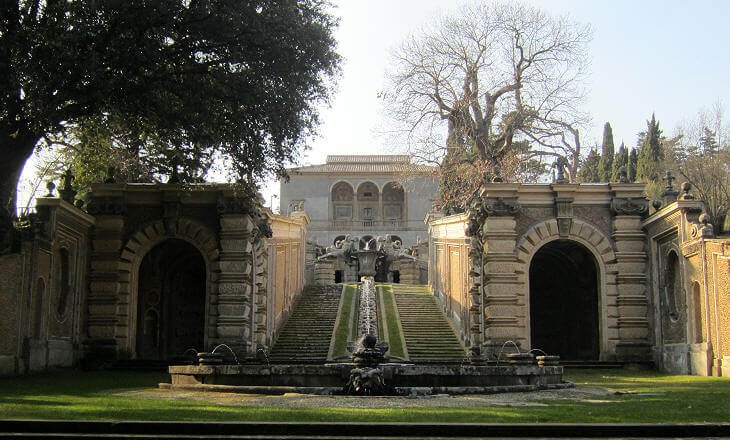The gardens of the Farnese Palace on Palatine Hill in Rome represent one of the most significant architectural and cultural projects of the Renaissance, while also being recognized as the first botanical garden in Europe. The history of these gardens highlights the influence of the Farnese family and the importance of botany and architecture during the Renaissance period.
Historical Context
The Farnese family was one of the most powerful and prominent families in Italy during the Renaissance, with close ties to the Catholic Church and the Vatican. Pope Paul III (Alessandro Farnese) was one of the strongest patrons of art and architecture during his papacy (1534-1549), encouraging the development of important artistic and architectural projects throughout Rome. The Palatine Hill, with its historical and symbolic significance as the site of the Roman Empire’s origins, was the ideal location for the Farnese family to create a garden that would showcase their wealth and power.
Creation of the Farnese Gardens
The creation of the gardens began in 1550 under Cardinal Alessandro Farnese, the grandson of Pope Paul III. Alessandro wanted to create a space that would combine the beauty of nature with classical architecture and art. The gardens were designed by the renowned architect Jacopo Barozzi da Vignola, who used the natural contours of Palatine Hill to create a series of grand gardens, terraces, and fountains.
Giardini di Sopra (Upper Gardens)
The gardens included numerous plantings, paths, and structures that blended with the architecture of the ancient Roman palaces located on the hill. Additionally, as part of the Renaissance trend for collections, the gardens housed a variety of ancient sculptures and monuments, enhancing the classical atmosphere of the space.
Europe’s First Botanical Garden
One of the most remarkable aspects of the Farnese Palace gardens was that they became the first botanical garden in Europe. Cardinal Alessandro Farnese, as a patron of the sciences and letters, promoted the cultivation and study of plants from all over the known world. The gardens were filled with rare and exotic plants, collected from various regions around the Mediterranean and beyond, which were maintained and studied by botanists and scientists of the time.
The creation of such a garden was not merely an exhibition of wealth but also a contribution to the science and knowledge of the era. The gardens functioned as a kind of outdoor laboratory where scientists could study the properties and uses of plants, contributing to the development of pharmacology and medicine.
Giardino delle Cariatidi
The Influence of the Farnese Gardens
The Farnese Gardens on Palatine Hill became a model for many other gardens that were created throughout Europe during the Renaissance and later. The concept of the botanical garden, as a space where science, art, and nature intersect, spread to other European countries, leading to the creation of similar spaces in France, Germany, and England.
Moreover, the gardens became a meeting place for intellectuals, artists, and scientists of the time, fostering the exchange of ideas and promoting the cultural and scientific movement of the Renaissance. Even today, the legacy of the Farnese Gardens is evident in many modern botanical gardens and parks that combine the beauty of nature with scientific study.
Decline and Legacy
Fontana della Catena (chain) dei Delfini
Over time, the Farnese Gardens suffered from deterioration, and many of the original structures and plantings were lost. However, in recent years, efforts have been made to restore and preserve the site, highlighting its historical and cultural significance. Today, visitors can explore the gardens and discover their rich history, as well as their importance in the development of botany and architecture in Europe.
The gardens of the Farnese Palace on Palatine Hill are not merely a historical site but a symbol of the Renaissance, of the revival of science and art, and of humanity’s desire to understand and adorn the natural world. As the first botanical garden in Europe, they continue to inspire and remind us of the importance of the connection between nature and culture.










